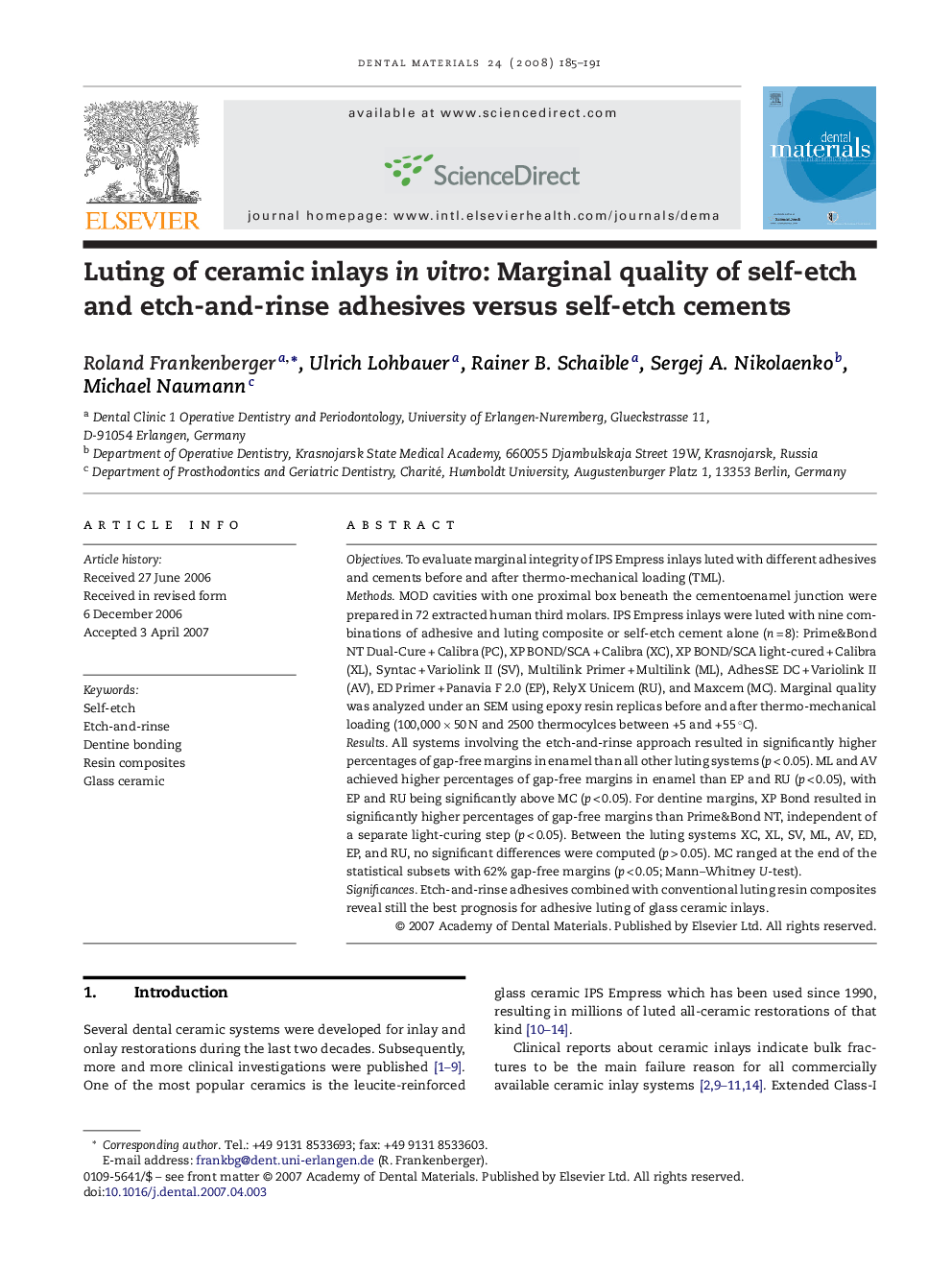| Article ID | Journal | Published Year | Pages | File Type |
|---|---|---|---|---|
| 1423248 | Dental Materials | 2008 | 7 Pages |
ObjectivesTo evaluate marginal integrity of IPS Empress inlays luted with different adhesives and cements before and after thermo-mechanical loading (TML).MethodsMOD cavities with one proximal box beneath the cementoenamel junction were prepared in 72 extracted human third molars. IPS Empress inlays were luted with nine combinations of adhesive and luting composite or self-etch cement alone (n = 8): Prime&Bond NT Dual-Cure + Calibra (PC), XP BOND/SCA + Calibra (XC), XP BOND/SCA light-cured + Calibra (XL), Syntac + Variolink II (SV), Multilink Primer + Multilink (ML), AdhesSE DC + Variolink II (AV), ED Primer + Panavia F 2.0 (EP), RelyX Unicem (RU), and Maxcem (MC). Marginal quality was analyzed under an SEM using epoxy resin replicas before and after thermo-mechanical loading (100,000 × 50 N and 2500 thermocylces between +5 and +55 °C).ResultsAll systems involving the etch-and-rinse approach resulted in significantly higher percentages of gap-free margins in enamel than all other luting systems (p < 0.05). ML and AV achieved higher percentages of gap-free margins in enamel than EP and RU (p < 0.05), with EP and RU being significantly above MC (p < 0.05). For dentine margins, XP Bond resulted in significantly higher percentages of gap-free margins than Prime&Bond NT, independent of a separate light-curing step (p < 0.05). Between the luting systems XC, XL, SV, ML, AV, ED, EP, and RU, no significant differences were computed (p > 0.05). MC ranged at the end of the statistical subsets with 62% gap-free margins (p < 0.05; Mann–Whitney U-test).SignificancesEtch-and-rinse adhesives combined with conventional luting resin composites reveal still the best prognosis for adhesive luting of glass ceramic inlays.
